FromBustler this new competition winning entry which includes Danish Landscape Architects SLA, whose Stig L. Andersson whose transformation of urban spaces to create the experience of nature rather than it’s imitation I have long admired:
Danish practice Henning Larsen Architects and the consortium consisting of the architecture companies Friis & Moltke and Brunsgaard & Laursen, the engineering companies NNE Pharmaplan and Orbicon Leif Hansen, the consulting company Norconsult and landscape architects SLA have won the competition for the extension of Herlev Hospital, just outside of Copenhagen.
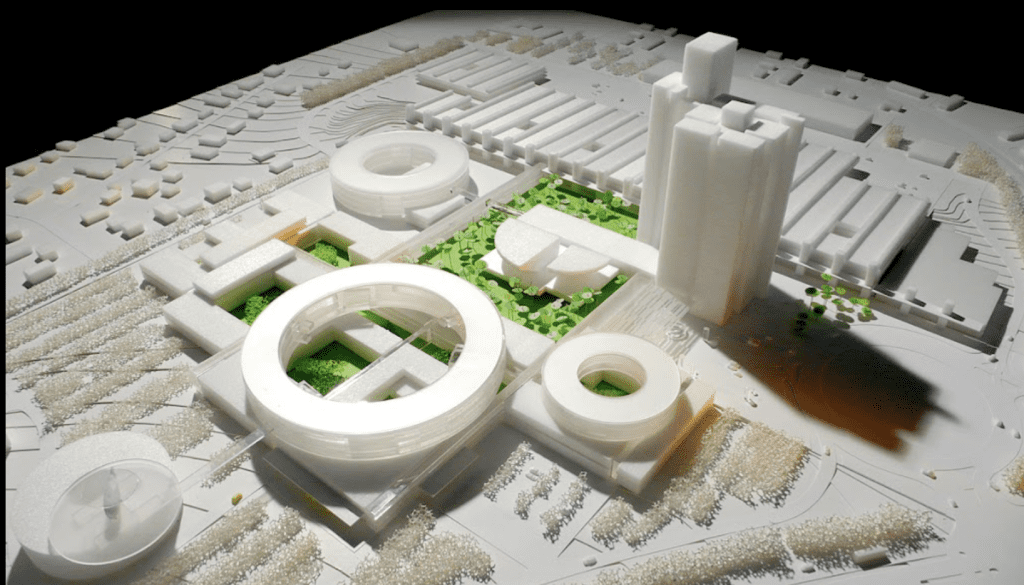
The competition was launched internationally in December 2009, and five consortiums were selected to participate in May 2010. The project proposals were submitted in late October, and, on April 12, the winner was announced. The architecture companies of the other four consortiums included schmidt hammer lassen architects, Vilhelm Lauritzen Architects, C.F. Møller and Dissing+Weitling.
Competition-winning design for the Herlev Hospital extension by Henning Larsen Architects in collaboration with Friis & Moltke, Brunsgaard & Laursen, NNE Pharmaplan, Orbicon Leif Hansen, Norconsult, and SLA, Image: Henning Larsen Architects
Competition-winning design for the Herlev Hospital extension by Henning Larsen Architects in collaboration with Friis & Moltke, Brunsgaard & Laursen, NNE Pharmaplan, Orbicon Leif Hansen, Norconsult, and SLA, Image: Henning Larsen Architects
Project Description from the Architects:
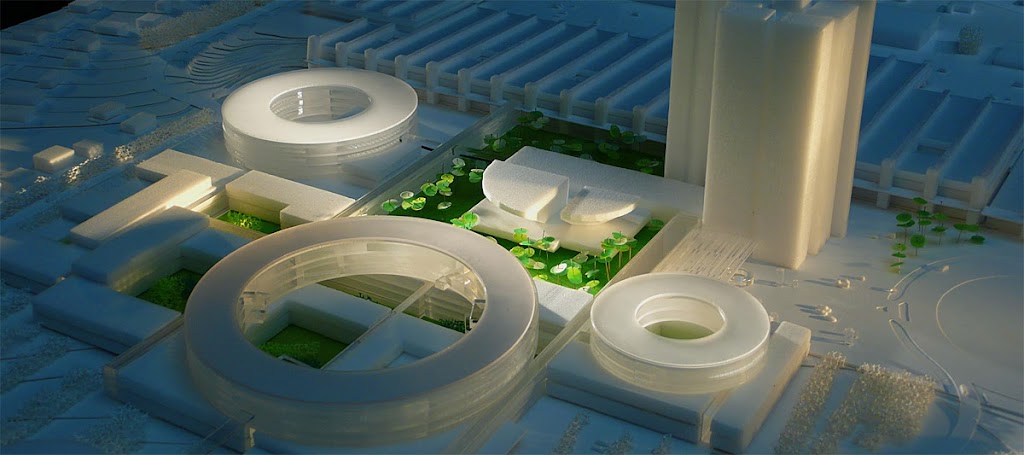
The 52,000 m2 extension of Herlev Hospital will comprise a new emergency department and maternity services centre, including a pediatrics unit and maternity ward, among others.
The winning project consists of three circular buildings placed on rectangular bases – which are displaced from each other creating a number of inviting outdoor spaces. The new extension thus constitutes a down-scaled and compressed contrast to the 120 metre high rectangular geometry of the existing hospital.
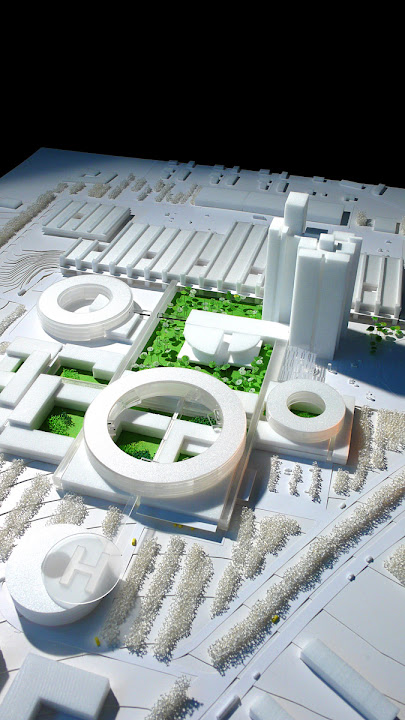
Model photo, Image: Henning Larsen Architects
The building complex as a whole will go from being a very ”large house” situated on a plot without outdoor spaces to becoming a ”built-up area” offering a variety of distinctive elements and eventful outdoor spaces. A hospital structure constitutes an organisation of a large number of small spaces which – in this project – are spatially contrasted by the near outdoor environment, inner gardens and courtyards.
A number of separate building volumes with contrasting geometries form an inspiring contrast to the existing structuralist building and contribute to considerately adapting the area as a whole to the scale of the surroundings.
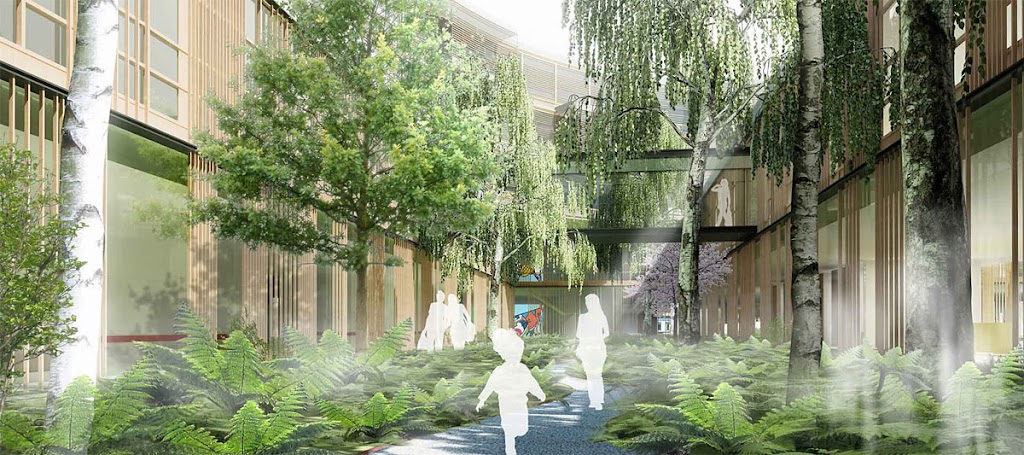
Model photo, Image: Henning Larsen Architects
Landscape
The recreational and healing effect of nature is well-documented. At Herlev Hospital, this knowledge is taken seriously – thus, luxuriant courtyards, green roof gardens and a large, central green heart provide the new hospital with an altogether vibrant and life-affirming atmosphere.
Read More:
The outdoor spaces of the hospital are designed and interact in a way that makes them appeal to all senses. Water is an important element and has been incorporated in the form of water particles, water surfaces or simple pools of water. As many of the hospital users have a view of the outside environment through the windows of the building, the landscape is designed as a number of “pictures” varying with the rhythm of the hospital and changing seasons.
”We know that nature has a healing and calming effect on humans. At a hospital, this is of significant importance. In our proposal, the landscape thus plays a very central role – not only around but also in the middle of the buildings. Herlev Hospital will be a luxuriant, vibrant and green hospital, where patients will not only feel better than they normally do at a hospital – they will also recover in a shorter time”, says Stig L. Andersson, Creative Director in SLA, the landscape architects behind the winning proposal.
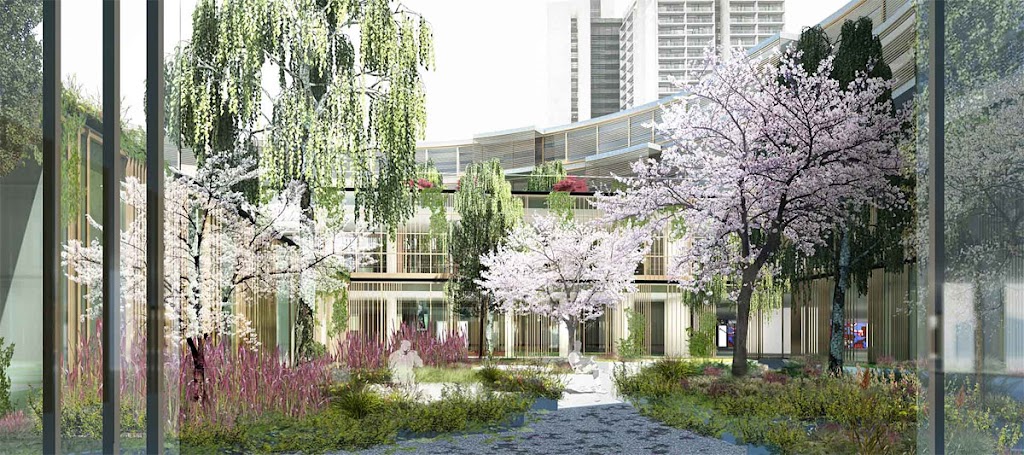
Visualization, Image: Henning Larsen Architects
Extract from the citation
”Based on a comprehensive analysis of developments in the healthcare sector and a strong focus on creating a welcoming, clear, worthy and sensuous setting for patients, relatives and staff, the vision of the competition team has been to create a symbiosis between the hospital and its surroundings. A symbiosis where the individual elements form part of a natural cycle and create a “sensory hospital” that will position Herlev Hospital as an exemplary and innovative spearhead in healthcare.”
”The project powerfully unites building design and landscape into an architectural whole providing patients, relatives and staff with the experience that “focus is on the individual”. The project must be emphasised for its high and well-argued ambition level for healing architecture.
The healing potential of architecture is consistently translated into sensuous spaces – in an approach characterised by great variation and commitment at many different levels.”
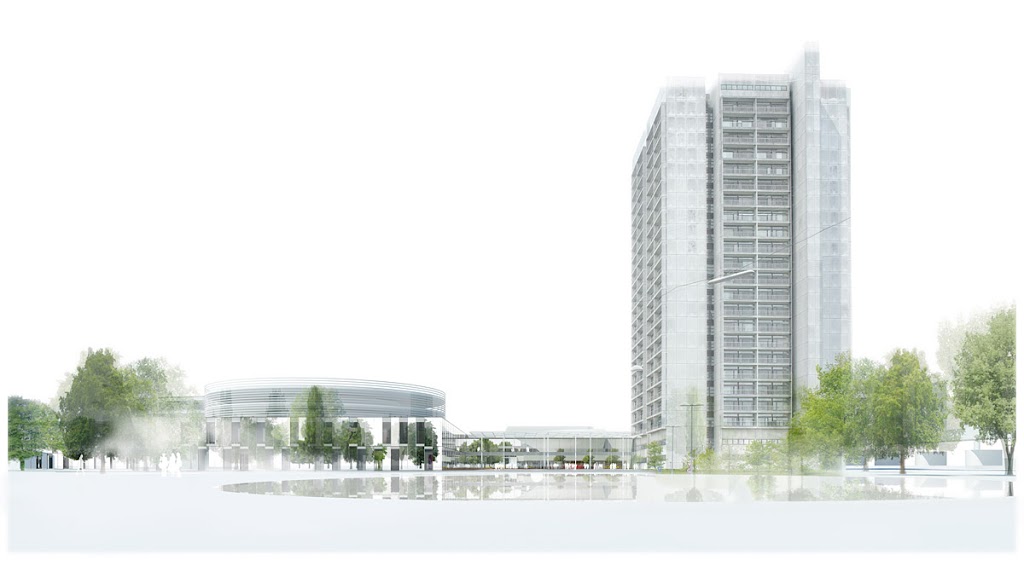
Visualization, Image: Henning Larsen Architects
Herlev Hospital
The existing Herlev Hospital was constructed by the Copenhagen County from 1966 to 1976 following an architectural competition won by architects Gehrdt Bornebusch, Max Brüel and Jørgen Selchau. The original hospital consists of a 26-storey building connected to an auditorium building designed as an elegant, fan-shaped concrete structure as well as to a four-storey building comprising examination and treatment wards.
Artist Paul Gernes is behind all interior walls coloured in light pastel shades as well as the geometric decoration of the entrance hall, which has provided this room with a unique, distinctive character.
With its 4,500 employees and 22 medical wards, Herlev Hospital is one of the largest hospitals in Denmark. The Hospital is one of the four local hospitals of the Capital Region of Denmark offering acute treatment and an emergency department open around the clock. It services 425,000 citizens from the municipalities of Ballerup, Gladsaxe, Herlev, Egedal, Rødovre, Furesø, Gentofte, Lyngby-Taarbæk and Rudersdal. In addition, the hospital services 700,000 citizens from the entire Capital Region in certain specialist fields as well as citizens from outside the region in the area of cancer treatment.
The future Herlev Hospital will provide the basis for consistent patient care. The first phase of the extension offers a new emergency department and maternity services centre, among others. These buildings are expected to be completed in 2017.
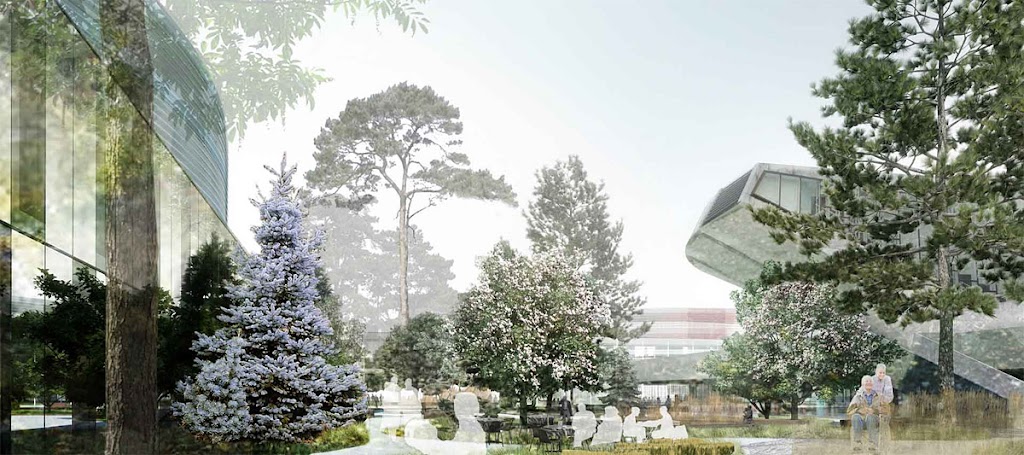
Visualization, Image: Henning Larsen Architects
The hospital of the future
Henning Larsen Architects has worked extensively on the development of hospital buildings for a number of years. Inspiring and well-defined spaces, ample daylight and a clear, well-arranged layout are of significant importance for patients’ well-being and are essential factors in the treatment process.
The architectural and spatial qualities should be combined with optimal logistics and technical structures. In consistently prepared hospital designs, focus is on providing an architectural framework for efficient and rational working procedures and a safe treatment environment.
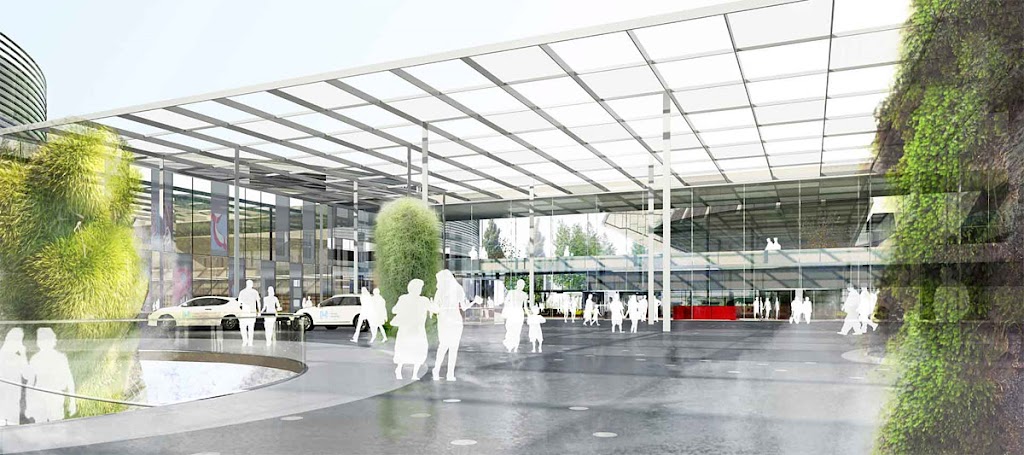
Visualization, Image: Henning Larsen Architects
A hospital in the 21st century should be organised with a focus on the individual – the whole, holistic individual. Whether an out-patient only at the hospital for a short period of time or whether seriously, perhaps critically ill and hospitalised for a long period, patients sense spaces, light, materiality and colour more deeply and profoundly than people in good health. This is an essential factor to keep in mind when designing a new hospital.
Henning Larsen Architects attaches great importance to designing worthy and inspiring hospitals that have a positive effect on any recovery process. Worthiness is a central theme in ensuring that patients experience the hospital as a welcoming and safe place to stay and as a place designed to meet the users’ needs, regardless of whether they are patients, relatives, visitors or staff.


